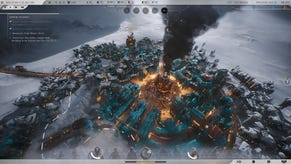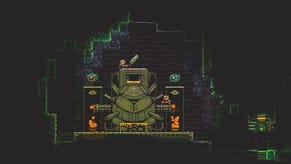The fallen price of indie games
How did they get so cheap, and should they cost more?
"It was obvious hours into launch that I'd messed up."
In 2010, Terry Cavanagh released the platformer VVVVVV with a launch price of $15 but soon received complaints about it being priced too high. Kieron Gillen wrote in the RPS review of VVVVVV, "While I think it is worth the money, fifteen dollars does strike you as a lot for an indie lo-fi platformer."
"I desperately wanted to fix it and drop the price," says Cavanagh. "But it seemed super unfair to the people who'd already paid $15, so I held my ground. More than that, I'd done pre-orders - over a hundred people had given me money before the game had even come out to help keep me afloat. It would have been totally unfair to reduce the price of the game to less than what they'd paid for a pre-order."
Cavanagh was one of many who discovered the hard way that the price of indie games was on the way down. Should independent developers just accept low prices as a given - or is there an argument for pushing back against market forces?
If you're a developer who has no interest in zero price models such as free-to-play, finding the means to raise what is perceived as a fair price would seem like an important goal. Indie developers are entrepreneurs who face high business risk. A videogame studio must continuously create products which have an onerous development time, finite shelf-life and be sufficiently differentiated from their peers to have a decent chance of success. A single failure can easily kill a studio.
Indies who already have a strong audience may find it easier to commit to resisting low prices but this has its own downside. Games designer Tadhg Kelly has described how successful developers banding together against adverse market factors can be called out for "pulling up the ladder".
In May 2014, a survey conducted in the UK by TIGA, The Independent Game Developer's Association, revealed that nearly every developer they contacted relied on some form of third-party funding in the previous year. It is an incredible leap of faith for indie developers to commit to a project full-time, so many follow the 80s bedroom model: coding games in their free time. Without access to a line of direct funding, such as a publisher or crowdfunding, those who take the full-time plunge will use contract work to keep afloat, burn through savings or rely on family to subsidise their entrepreneurial endeavour. This is not unique to games; author Ann Bauer has talked about this last option being the dirty secret of the writing industry.
But does the bedroom model hinder or promote low prices? Bedroom coding discharges the developer from the urgent responsibility to seek a living wage through game development. By definition it is a low-cost model and if fresh indie developers fall into an attitude of ‘when it's done’ as opposed to ‘getting it done’, they may lose sight of development costs in terms of their own labour. After all, the alchemy of deadlines and commercial constraints can transmute the joy of a hobby into work, so it is natural to resist formalising bedroom projects. Joseph Mirabello is one of the rare few who slavishly noted down every hour he worked on Tower of Guns, the procedurally-generated FPS he released in 2014. Over 600 days, he discovered he had worked 3,850 hours.
We could argue that the subsidised bedroom coder is unfair competition for those who need game sales to live. But an individual’s ethics only last as long as there is food in the pantry; if you’re desperate for success, pricing against the grain is a hard ask. The bedroom coder is better positioned to fight for higher prices.
School teacher Kyle Reimergartin is a hobbyist game developer and doesn’t require a game to be a raging success to survive. Prior to releasing his first commercial game, FJORDS, he had conversations with fellow developer Merritt Kopas about pricing. "She helped me see that setting prices on our work helps other artists do the same," Reimergartin explains, "and setting a price helps frame player expectations and influences perception of our work.
"I realised that I hadn't been consciously releasing my games for free; I had been doing it because I didn't know how to charge for them, and I hadn't thought about all the implications of having a price. The conversation [about price], unfortunately, often turns to the dollars-to-time scale when deciding whether a game is worth it or not. I realised that the price of FJORDS would actually be the initial point of interaction, as players decided whether they would or wouldn't pay it, and I wanted to avoid, as much as possible, the conversation about hours and content. I wanted the decision to buy FJORDS to be a curious, impetuous one, made preferably without any knowledge of what the game might be like."
Perhaps this was a lot to ask for an audience who may never have heard of Reimergartin before, particularly as FJORDS is an unkind and surreal platformer. He released FJORDS in 2013 at $7 but it would come with additional extras if the player ponied up a full $10. Much thought went into the original price. For example, it needed to be more than $5 so it evaded the whole videogame-versus-price-of-cup-of-coffee debate. "Delightful as coffee is, food comparisons inevitably communicate the ephemeral qualities of videogames, no, no, no, no."
FJORDS is a niche game and, as expected, has not brought in money to rival his salaried job but it did well enough for Reimergartin.
However, sometimes a higher price doesn’t actually mean what it says on the tin because the price waters are muddied by the presence of the ubiquitous discount. Browsing through the Steam release feed for any particular month will unearth many examples of product launches with anything between 10% and 50% off the ‘official price’ and the portals generally recommend this to gain market traction during the critical launch period. For example, when Mouldy Toof Studios released The Escapists to Mac and Linux in 2015, they reduced the game’s price by 40% across all platforms including PC.
Instructive in how the launch discount rewards the developer, take the example of Peter Brinson, an Assistant Professor of the Practice at the School of Cinematic Arts, Los Angeles. He has been responsible for many game experiments over the years but his most well-known work is 2011’s The Cat and The Coup, a metaphorical retelling of how Britain and the US toppled Iranian Prime Minister Mohammed Mossadegh, which he developed with Kurosh ValaNejad. This was released for free through digital portal Steam, but he went down a different route for Rehearsals and Returns, a meditation on our connections with others.
After raising a modest Kickstarter in 2013 which brought in $6,000, nearly double the original goal, he heavily discounted the game at launch. "Rehearsals and Returns was $1 at launch and exactly for a week. Then it was $4 for a number of months," says Brinson.
For Rehearsals and Returns to work, it needed to gather a lot of player input - and fast. "It was important to get a critical mass quickly, and when it was new. I wanted to gather thousands of player statistics - an integral part of the individual user experience - as soon as possible. And yes, the game's website had a specific countdown warning when the price would quadruple. And indeed 90% of the sales were in that first week and during the intermittent sales."
Brinson’s project shared some similarities with eSports titles, which usually adopt a free-to-play model to grow the player base quickly. In fact, after a few months Rehearsals and Returns became free. "I see this as like a movie being put on Netflix. Technically, Netflix is not free, but this is how it feels to the audience: upon release, a movie is expensive in the theatres; months later, it is cheaper as a rental; months later still, it is all but free on Netflix."
Brinson’s pricing strategy demonstrates the power of near-zero prices. "Rehearsals and Returns is not my first project where the aggregate of plays is an explicit part of the individual experience. It's a strange mechanic for a project that I never intended to be popular. I knew I was at best making a game for a small group, appealing to those who seek games with a stark lack of a reward system. But I learnt that it is possible to make nearly all your money at $1 per sale and little at $4."
It’s a common story. British developer Alan Hazelden also revealed that most first-year PC sales of his puzzler A Good Snowman Is Hard To Build had been made through discounts. Discounts create revenue spikes. These spikes are so pronounced that the official price is all too often a fantasy, a framing device to make the real discounted price look like a bargain. Discount price dominates revenue and indeed, for many developers, it would not be far-fetched to suggest a game without a discount is a game off the market.
Discounts straight out of the gate are also common in the AAA space, but they descend from a much higher price point. Although perhaps more concerning for the indie developer are older AAA titles which are discounted heavily or re-released in cheaper collections. These can compete directly for indie dollars in the same price space: polished, content-dense and relatively recent AAA works can go head to head with an indie pixel platformer. Good luck.
Full-time developer Jason Rohrer, who is known for curiosities such as Passage and Inside a Star-filled Sky, organised his own little revolution in 2014. He wanted to put a stop to the churn of discounts, opposing the idea that your strongest supporters should be "gouged" with an initial high price, benefiting late adopters who always got the best discounts:
Sales screw your fans. Your fans love your games and eagerly await your next release. They want to get your game as soon as it comes out, at full price. But they are foolish to do that, because a sale is right around the corner. Even in economic terms, the extra utility of playing the game early, at release, is not big enough to offset the extra cost for most people. It makes more sense to wait, unless they love you and your work so much that they're willing to throw economic reason out the window. It's nice to have fans that love your work that much. And these are the fans that you kick in the teeth when you put your game on sale.
This is an exaggeration because as previously explained launch and pre-launch discounts are common. But the point that the best discounts arrive much later is sound and is the same concern that Terry Cavanagh had when he knew he’d pitched VVVVVV at too high a price and was trapped into keeping it there.
Rohrer was also concerned this would reduce developer revenue in the long term:
If just half of the players who buy the game during a 50%-off sale would have bought the game at full price if that was their only option, we'd already have a wash. What fraction of sale-waiting players fall into this category? I suspect way more than half.
Even though he had found sales on Steam to be intoxicating, each generating its own revenue surge, he chose to forfeit that for an ideological approach. He released The Castle Doctrine, an MMO about home invasion, with the following pricing arrangement: during the alpha testing period, the game was priced at $8, on launch week it would rise to $12 and then, after that, rise to $16. Forever. As promised, it is still $16 at the time of writing.
But we cannot infer much that is significant from Rohrer’s experiment. Individual success is often a function of marketing rather than a sales mechanism or even a game’s character. The inverse pricing experiment became an integral part of the chatter about Rohrer’s game; his stand was endlessly discussed on Twitter, Reddit and various blogs. Further to this, some game critics called for a boycott of The Castle Doctrine as they viewed it as a parable supporting the right to kill someone who breaks a social contract. If you followed indie gaming at the time, it was impossible not to have heard of the game.
Rohrer posted that sales were dropping towards the end of the launch week and he had made - alpha sales all included - around $70,000 in revenue. The spikes on his sales graph all reflect the game hitting the news circuit, demonstrating the importance of attention over pricing models. While not making Rohrer wealthy, it was enough to keep a roof over his head and he considered this a success although stopped short of saying it vindicated the approach.
The niche product has the biggest problem. Such games have a particular, small audience and cannot survive without higher pricing. It is the developer without attention who suffers most in a bargain basement economy. It’s difficult to see how a few rebels in the niche world could change the indie gaming moneyscape. Established developers are more comfortable with lower prices as the volumes make up for it so it’s usually left to the starving artists, struggling for an audience, to make the case for higher prices.
While running an indie game business is about competition, the difficulty in getting financial traction led to the adoption of a cooperative strategy: the bundle. In this approach, different developers come together and sell their games as a single bundle, combining their individual marketing power and fanbases for the good of all participants. It became a promising solution to the precarious nature of indie software development.
In 2013, the collaborative title Sportsfriends demonstrated how bundles could go further. The three games Hokra, Johann Sebastian Joust and BaraBariBall had done well at conventions and gaming expos - but they were local multiplayer games. The market for such titles in the indie space, particularly with special requirements (Joust needed Sony Move controllers), meant the likelihood of individual success on the market was slight. Four developers came together to create an integrated product, Sportsfriends, which would have a broader appeal. The games would become inseparable. Perhaps you would not be able to play all of the titles — but you would be able to play something. In November 2012, the team launched a Kickstarter which just scraped across the finish line. The anthology was launched a couple of years later although there was some disappointment that flagship title Joust could not be played on Microsoft Windows. How well did it do? The results are not that encouraging.
Sportsfriends producer and co-designer Doug Wilson explains: "I didn't expect to make much money off of Sportsfriends, it was primarily a passion project. Still, in the end we actually did a little better than expected! I certainly didn't lose money on the project, which was a relief. I saw none of the initial Kickstarter money - for the two years of development I got by on savings and side jobs."
It did well enough that Wilson had a little breathing room after the project was done but he didn’t make enough money to fund a whole studio. "I could probably work on my own small games for a bit, but I couldn't fund a team project. All that said, I feel like we did as well as we could reasonably hope for with such a strange game! So I feel pretty fortunate, all things considered."
But collaborations like Sportsfriends are rare. What became the norm was the industrialised bundle, which allows customers to pay for several games at a price of their choosing. This became so successful that AAA publishers began to get involved; the Humble Bundle which championed the concept for indie games in 2010 began to take on AAA bundles in 2012. The bundle became a permanent feature of the market, like the discount. The blunt truth is that the bundle was just another vector for game prices to slip to zero. Their innovation for consolidating customer attention became an innovation for reducing the effective price to sub-dollar levels.
Even if a consortium of independent developers could agree to keep prices high, forcing consumers to confront what might be dubbed ‘realistic prices’, what is the average consumer meant to make of that? The indie game cartel, keeping prices artificially high? This unfortunately casts developers and players as combatants in the economic sphere.
There are examples of small outfits who tough it out. Arcen Games, who are known for deep tactical titles such as AI War that will never be populist, have survived over the years with higher product prices. They released The Last Federation in September 2014 with a 25% discount but its official price remained £14.99 one year on.
But I choose my words precisely with "tough it out". An unexpected drop in sales in 2015 meant Arcen were rapidly burning through cash reserves every month while struggling through the protracted development of a title called Stars Beyond Reach. They switched to making a smaller title, a bullet hell roguelike called Starward Rogue. The last-minute desperation of its launch in January 2016 meant no one had been able to allocate time for marketing. So while the Arcen team successfully created something to save the company, the lack of buzz meant it arrived on the market stillborn. Many Arcen staff were laid off as a result of this failure.
Developers continue to beg players with appeals to reason. For crying out loud, the refrain goes, do you not understand how much work goes into a videogame? After complaints about a $20 price on the Steam forums for the game Brigador, developer Hugh Monahan compared the game’s five year gestation with getting married and having children or getting a PhD. He also pointed out many trivial items which were more expensive, like a trash can or a toilet plunger. Thankfully, he didn’t cite the price of a hot cuppa joe… but did bring up beer.
Such appeals have been going on for years. Developers and fans may punch the air at such flawless logic but Brigador was declared a failure by the team for turning in low sales although much of the blame was attached to a lack of marketing. Brigador had its first discount two months after release.
Even stalwarts of the price-the-niche-high club have had to reduce prices. Jeff Vogel has been making indie games for two decades and insisted in 2009 that developers should stick to a price they felt was right, that no one should shame them into dropping. Two years later, he dropped his prices.
I ask Vogel if it was because the prices were doing harm and he says, "My core position has never changed. If you sell niche products, to survive, your base price has to be high enough to keep you in business, and you have to convince a lot of people to pay that price. It’s just that business conditions change. The business of indie games changed a lot between 2009 and 2012, and then a lot again between 2012 and 2015."
Returning to Cavanagh, his minimalist twitch game Super Hexagon became a hit on iPhone in 2012, priced at $2.99, and it seems unlikely that he will release again at higher prices. "I think my experiences with both VVVVVV and Super Hexagon have left me feeling like pricing my games lower is better. I've been quite lucky to find an audience with both games, and the fact that they're cheap is a big part of that, I think. I'd much rather people felt like a thing I made was too cheap than too pricey."
While mobile is firmly in the thrall of zero, there has been resistance on the PC market. This resistance is so pronounced that Robert Boyd of Zeboyd Games (Breath of Death VII: The Beginning, Cthulhu Saves The World) was concerned that prices were too high, calling it a "disturbing trend" that $20 was becoming the standard. In truth, prices remain in flux and heavy discounts are commonplace. And we must not forget that powerful economic forces conspire to depress prices.
Perception of value is king: does the price feel like it befits the end product? There is a simple solution to keeping prices high. Money. Nike spends millions on marketing as do AAA publishers. This marketing transmits one message, ‘This is a quality product worth the money we’re asking for.’ The price of $60 is millions of dollars.
Although it is difficult to see how the price of the average indie game could be boosted without such deep pockets, we must be mindful that nothing changes without resistance. In a world of wall-to-wall discounts, developers should always strive to convince players of the value of their work.
This is an adapted extract from The Weapons of Progress: From Videogame Revolution to Control. The book is a work in progress, but the first two chapters can be downloaded for free from itch.io.














